
Farmers who are hungry for bullish export data got some welcome news Monday, after USDA reported another solid week of export inspections for corn for the week ending April 25.
“A very good week of export inspections for corn showed clearly where demand is – Asia and Latin America – which accounted for nearly all the 53.8 million bushels,” says Farm Futures senior grain market analyst Bryce Knorr.
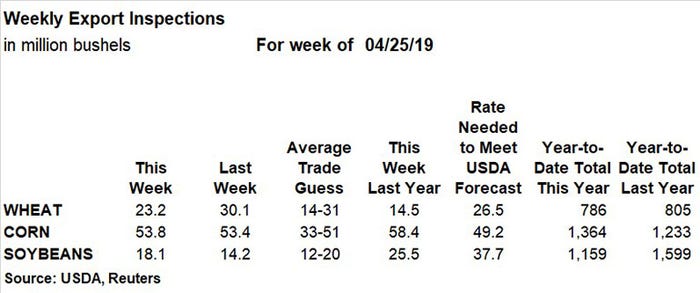
Last week’s total slightly bested the prior week’s tally of 53.4 million bushels and also landed above trade estimates, which ranged between 33 million and 51 million bushels. The weekly rate needed to meet USDA forecasts eased slightly to 49.2 million bushels, and cumulative totals for 2018/19 stayed 11% higher year-over-year after reaching 1.364 billion bushels.
Japan led all destinations for U.S. corn export inspections last week, with 17.2 million bushels. Other top destinations included Mexico (10.9 million), South Korea (7.8 million), Taiwan (3.4 million), Colombia (3.0 million) and Peru (2.1 million).
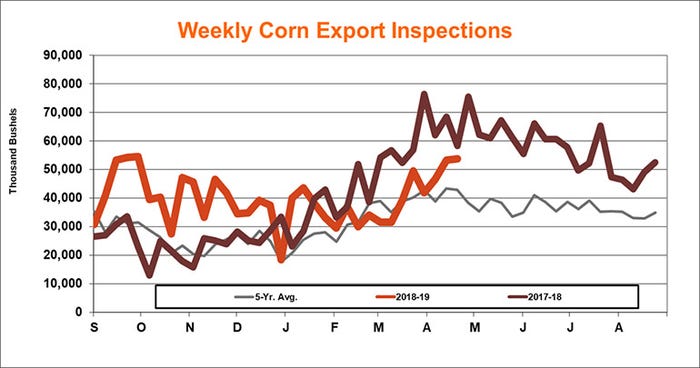
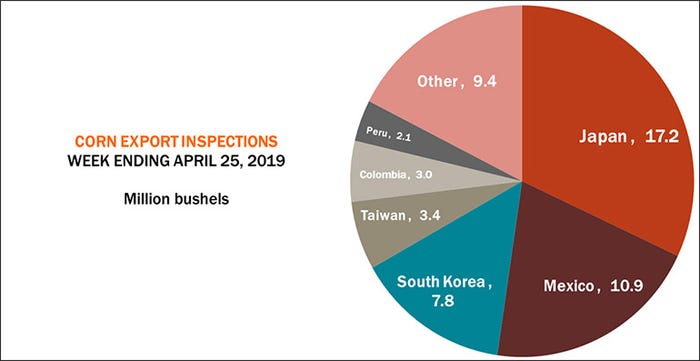
In contrast, soybean shipments have remained relatively disappointing – a trend that continued last week. Results so far come down to a fairly simple reason, Knorr says. Last week, China only accounted for 5 million bushels of soybean inspections, leaving it with outstanding sales of around 275 million bushels, he says.
“Chinese buyers continue to move very slowly to actually take delivery of purchases made after trade starts started getting serious in December,” he says. “Chinese foot-dragging could be a negotiating tactic. Or, it could just reflect very weak demand for soybean meal from the nation’s beleaguered hog industry as Brazil’s new crop starts arriving.”
Soybean export inspections reached 18.1 million bushels last week, which was marginally better than the prior week’s total of 14.2 million bushels but on the high end of trade guesses that ranged between 12 million and 20 million bushels. However, the weekly rate needed to match USDA forecasts moved higher, to 37.7 million bushels. Year-to-date totals of 1.159 billion bushels lag 27.5% behind the pace of 2017/18.
China’s 5.0 million bushels was enough to make it the No. 1 destination for U.S. soybean export inspections last week. Other top destinations included Japan (3.1 million), the Netherlands (2.4 million), South Korea (2.3 million), Mexico (1.3 million) and Malaysia (1.2 million).
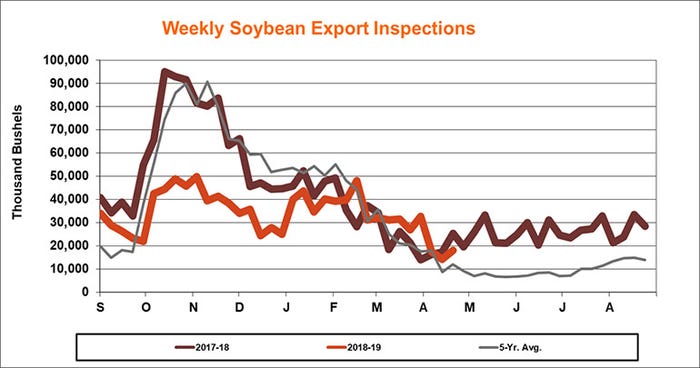
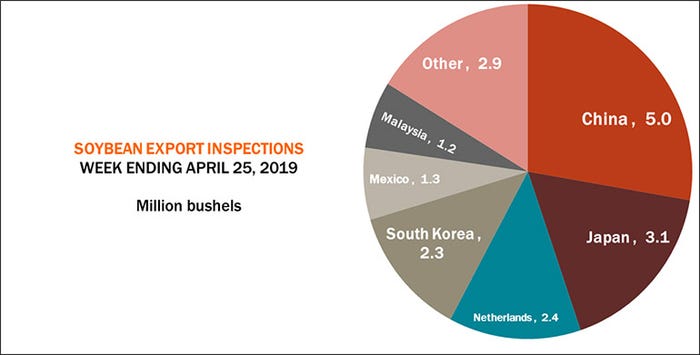
Wheat export inspections last week reached 23.2 million bushels, which was moderately below the prior week’s total of 30.1 million bushels and in the middle of trade estimates that ranged between 14 million and 31 million bushels. The weekly rate needed to match USDA forecasts remains an aggressive 26.2 million bushels. Cumulative totals for 2018/19 heading into its final month have reached 786 million bushels, about 2% lower year-over-year.
Mexico led all destinations for U.S. wheat export inspections last week, with 4.5 million bushels. Other top destinations included Nigeria (3.5 million), Malaysia (2.3 million), Thailand (2.1 million) and the Philippines (2.1 million).
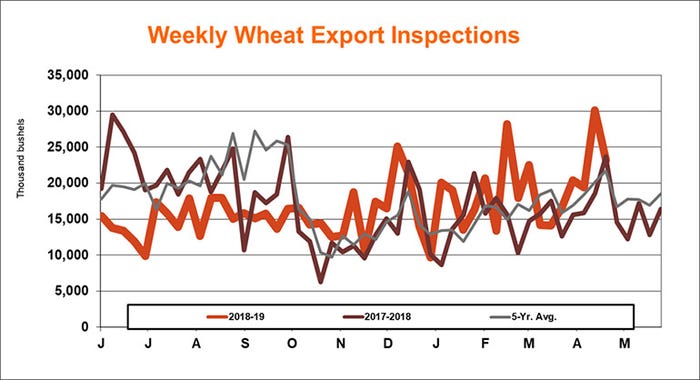

About the Author(s)
You May Also Like






